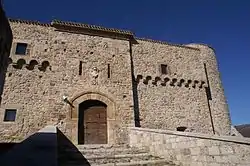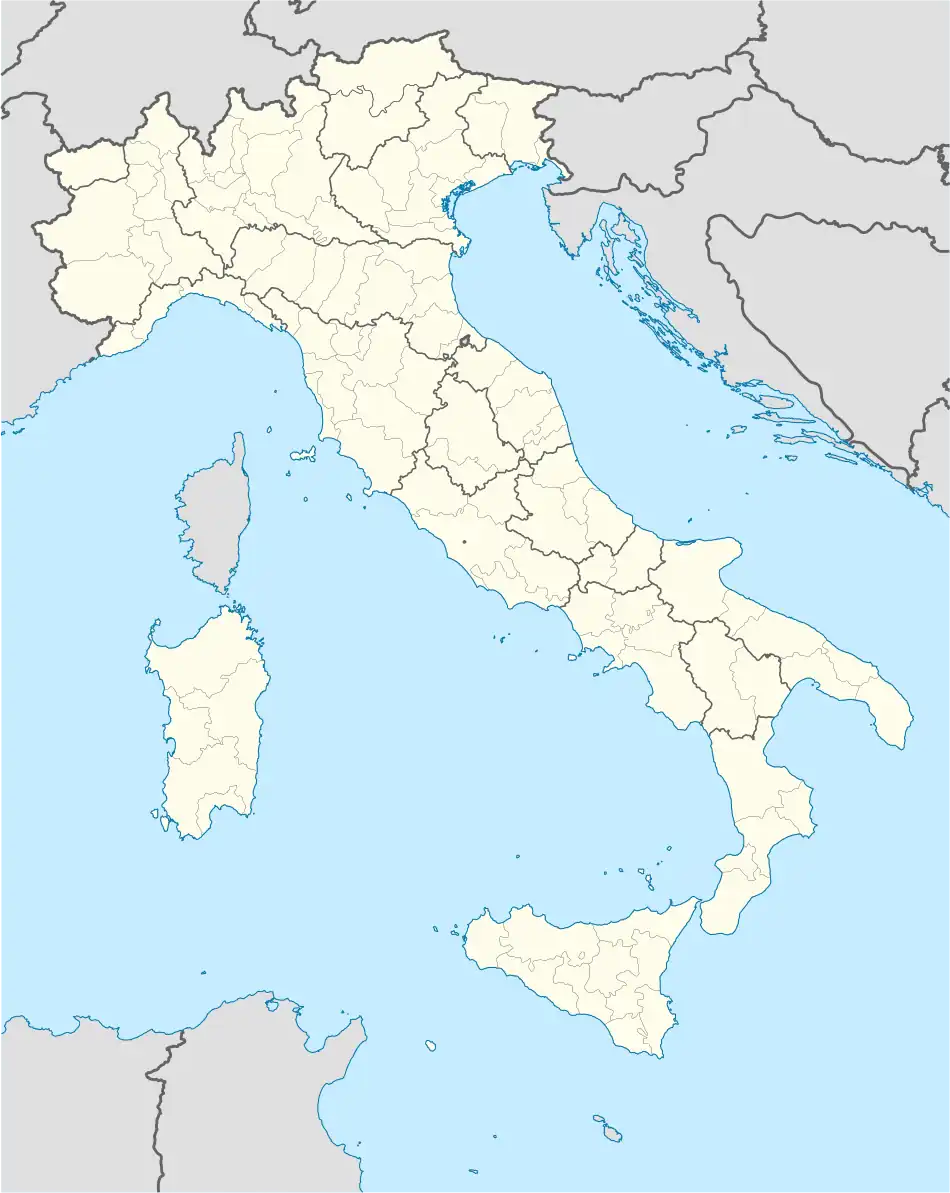Civitacampomarano | |
|---|---|
| Comune di Civitacampomarano | |
 | |
 Coat of arms | |
Location of Civitacampomarano | |
 Civitacampomarano Location of Civitacampomarano in Italy  Civitacampomarano Civitacampomarano (Molise) | |
| Coordinates: 41°47′N 14°41′E / 41.783°N 14.683°E | |
| Country | Italy |
| Region | Molise |
| Province | Campobasso (CB) |
| Government | |
| • Mayor | Paolo Manuele |
| Area | |
| • Total | 38.89 km2 (15.02 sq mi) |
| Elevation | 520 m (1,710 ft) |
| Population (30 November 2017)[2] | |
| • Total | 386 |
| • Density | 9.9/km2 (26/sq mi) |
| Demonym | Civitesi |
| Time zone | UTC+1 (CET) |
| • Summer (DST) | UTC+2 (CEST) |
| Postal code | 86030 |
| Dialing code | 0874 |
| Website | Official website |
Civitacampomarano is a small medieval town located in the Molise region of southern Italy.
It stands at an elevation of 520 metres above sea level. It has a population of around 370 inhabitants. Its history dates back to ancient times, with evidence of Samnite settlements in the area. Over the centuries, the town came under the rule of various civilizations, including the Romans, Lombards, and Normans.
During the medieval period, Civitacampomarano became an important fortified town, strategically positioned on a hill to defend against potential invasions. The town's historical architecture and cobblestone streets still reflect its medieval heritage.
Civitacampomarano borders Castelbottaccio, Castelmauro, Guardialfiera, Lucito, Lupara, and Trivento.
It is the birthplace of Gabriele Pepe (December 7, 1779 - July 26, 1849) a soldier, patriot, poet and literary figure, who fought in defence of the Neapolitan Republic in 1799. He was a cousin of Guglielmo and Florestano Pepe. He entered the Neapolitan Army at an early age. In the events of the Neapolitan Republic, he was captured by royalist troops led by Fabrizio Ruffo and exiled to France. Here he fought for the Napoleonic armies both under Joseph Bonaparte and Joachim Murat. He took part in the Neapolitan Revolution of 1820, and was again sent to exile, this time to Florence. On February 19, 1826, he duelled with the poet Alphonse de Lamartine, who had compared Italians to "human dust" in his poem "Le Dernier Chant du pélerinage d'Harold".[1] He wounded the French poet in the right arm. In 1836, he returned to Naples where, although aged, participated in the 1848 riots. He died July 26 1849 in Civitacampomarano.
It is the birthplace of Vincenzo Cuoco (October 1, 1770 – December 14, 1823) an Italian writer. He is mainly remembered for his Saggio Storico sulla Rivoluzione Napoletana del 1799 ("Historical Essay on the Neapolitan Revolution of 1799"). He is considered as one of the precursors of Italian liberalism[1][2] and the realist school. Cuoco adapted the critique of political rationalism of Edmund Burke and Joseph de Maistre for liberal ends, and has been described as a better historian than either of them.[3] He influenced many subsequent Italian intellectuals, from Ugo Foscolo and Alessandro Manzoni to Bertrando and Silvio Spaventa to Benedetto Croce and Antonio Gramsci.[3][4]
Sites
Medieval Architecture: The town's historic center is a maze of narrow alleys, stone houses, and medieval buildings, providing visitors with a step back in time to the Middle Ages.
The 13 Century “Castello Angioino”, Angevine Castle, is a notable landmark in Civitacampomarano, located on a hill overlooking the town. The castle provides panoramic views of the surrounding countryside.
Rural Beauty: The countryside surrounding Civitacampomarano is characterized by lush hills, vineyards, and olive groves, making it a serene and picturesque destination for nature enthusiasts.
- Church of Santa Maria Maggiore (c. 11th century)
- Church of Santa Maria delle Grazie, with a late-Gothic portal.
- Church of San Giorgio Martire
- Historic home of Vincenzo Cuoco which is an Air B&B
- Vallemonterosso Park
Culture
CVtà Street Fest” is a summer festival that began in 2016 it’s artistic director is the international famed Italian street artist Alice Pasquini. This festival of street art highlights the work of many international artists and attracts thousands of visitors yearly. Brightly colored murals are painted onto the old walls of this medieval town.
The village is also known for “I Ciell”, a cookie filled with a mixture of bread crumbs, “mosto cotto” which is the freshly pressed juice of wine grapes, simmered down to syrup, citric fruits, cocoa, coffee, honey, almonds and sugar.
Local Cuisine: Molise is renowned for its simple and delicious cuisine. Visitors to Civitacampomarano can enjoy traditional dishes such as cavatelli pasta, lamb dishes, and artisanal cheeses like caciocavallo and pecorino.
References
- ↑ "Superficie di Comuni Province e Regioni italiane al 9 ottobre 2011". Italian National Institute of Statistics. Retrieved 16 March 2019.
- ↑ All demographics and other statistics: Italian statistical institute Istat.